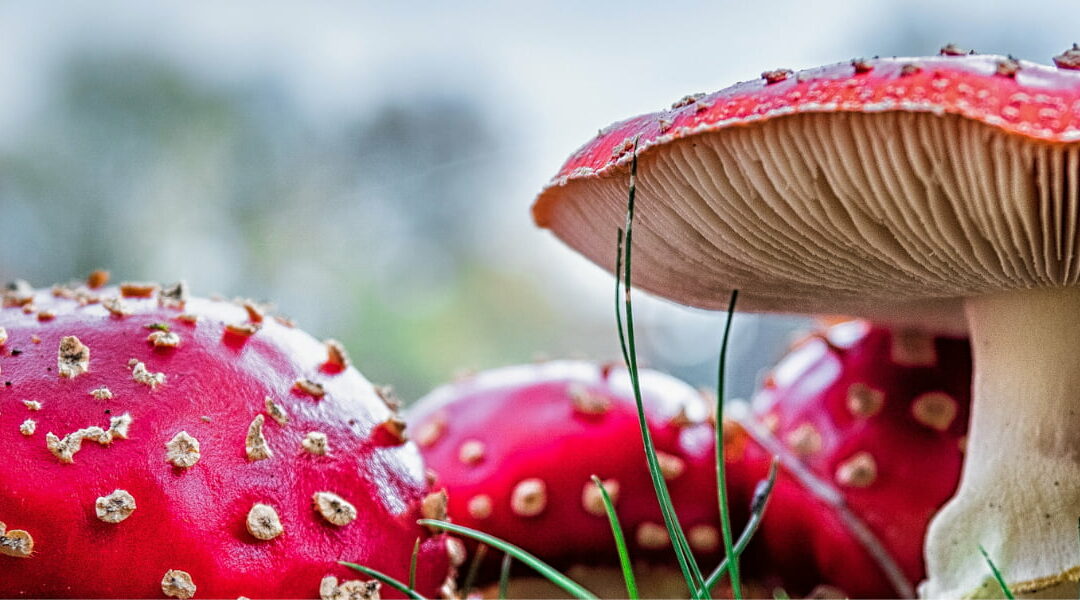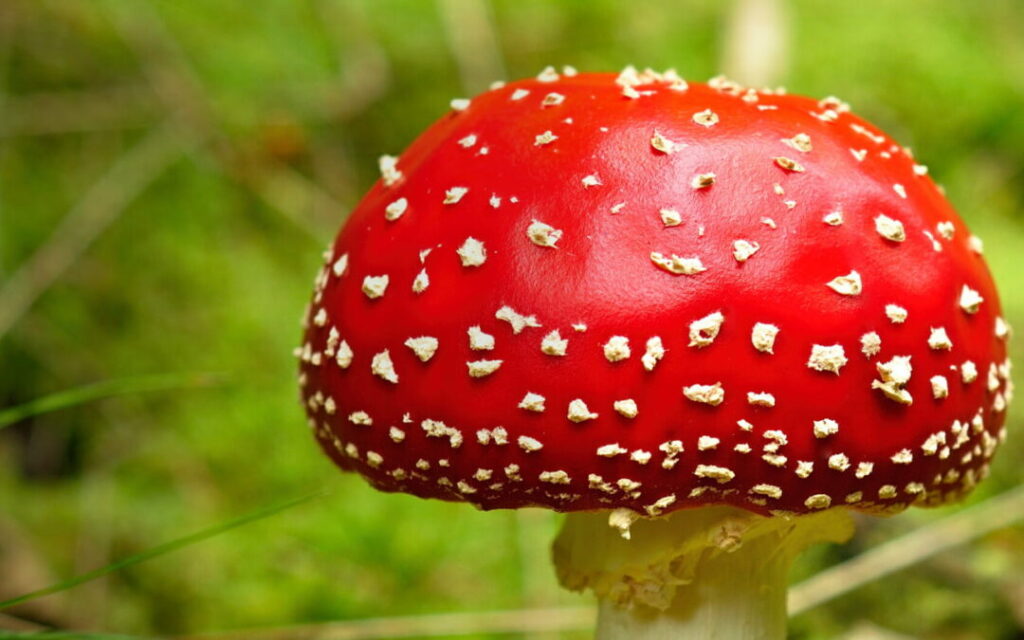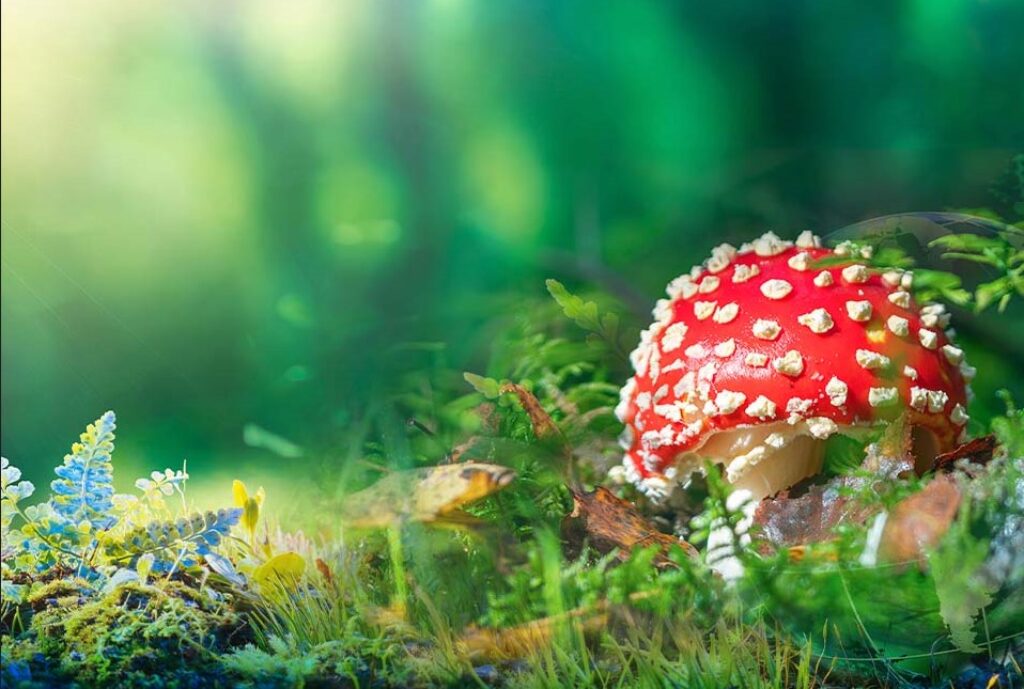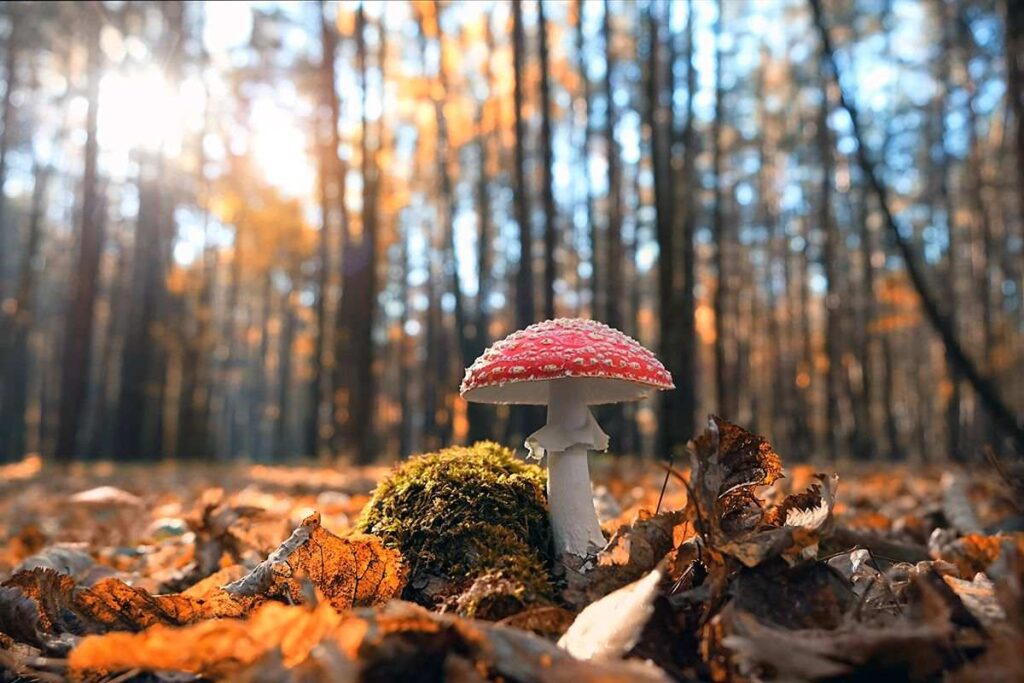
Foragers and mycologists have long been enthralled with the unique characteristics and powerful qualities of mushrooms. This blog article examines the special qualities of Amanita mushrooms and investigates the factors that contribute to mushroom fans’ attraction to them.
Table of Contents
The Allure of Amanita Mushrooms

Source: bluetoadbotanicals.com
Identifying Amanita Mushrooms
Amanita mushrooms are easily recognizable due to their distinctive features. They typically have a cap, gills, and a stem with a ring. The base of the stem often has a bulbous or sack-like structure known as a volva. The cap can vary in color but is often bright and eye-catching, with some species like Amanita muscaria sporting a vibrant red with white spots.
These mushrooms are found in various habitats worldwide, thriving in both deciduous and coniferous forests. Foragers prize them for their striking appearance, which makes them excellent subjects for photography and nature studies. However, accurate identification is crucial, as some species are highly toxic. This has led to the emergence of resources like the Amanita Shop, a platform where enthusiasts can learn about safe foraging and identification practices.
The Fascination with Their Toxicity and Psychoactive Properties
Among the most poisonous types of mushrooms are Amanita phalloides, sometimes referred to as the death cap. If consumed, the strong toxins in this fungus can seriously harm the liver and kidneys and frequently have deadly consequences. The risk connected to these mushrooms makes foraging more intriguing and cautious.
Conversely, some species like muscaria (the fly agaric) are known for their psychoactive properties. Historically, they have been used in various cultural and religious rituals. The psychoactive compounds in these mushrooms, primarily muscimol and ibotenic acid, can induce hallucinations and altered states of consciousness, contributing to their mystique and appeal among certain foraging communities.
The Role of Amanita Mushrooms in Ecosystems and Culture

Source: vidacap.com
Ecological Importance
Within woodland ecosystems, amaranth mushrooms are essential. Mycorrhizal connections are symbiotic interactions they create with trees. In this symbiotic partnership, the fungus aids in the trees’ absorption of nutrients and water, while the trees give the mushrooms their carbohydrates. Ecosystems of forests depend on this interaction to be healthy.
These mushrooms also contribute to the nutrient cycle by decomposing organic matter. This process enriches the soil and supports diverse plant and animal life. The presence of species is often an indicator of a healthy, biodiverse forest environment.
Cultural and Historical Significance
In several civilizations and historical periods, mushrooms have been deeply revered. Featured in literature, art, and tradition, the renowned muscaria is frequently connected to mysticism and magic. It has long been a part of shamanic rituals in Nordic and Siberian civilizations.
In modern times, these mushrooms continue to inspire artists, writers, and filmmakers, often symbolizing enchantment or danger. Their striking appearance and potent properties have made them a subject of fascination in popular culture, contributing to their enduring allure and mystery.
Conclusion

Source: geographical.co.uk
In conclusion, Amanita mushrooms captivate foragers and nature enthusiasts due to their striking appearance, potent properties, and ecological and cultural significance. Their role in ecosystems and human history adds layers of intrigue to these fascinating fungi.







